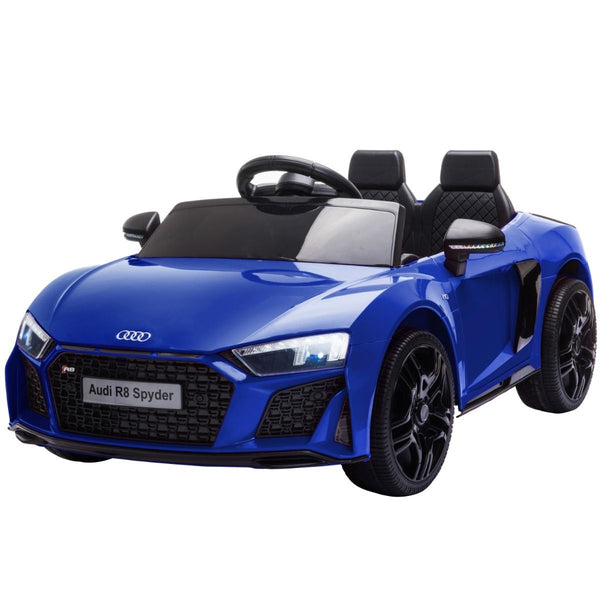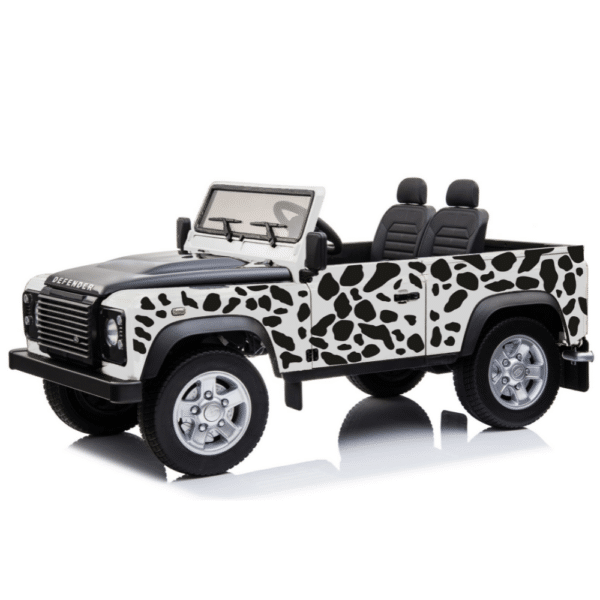Free Ideas On Deciding On Electric Kids Cars
Wiki Article
What Are The Things To Look For When You Purchase A Ride-On Vehicle For Children?
If you're thinking about ride-on cars for children, it's crucial to consider the age, size, and development stage to ensure that the car is safe, suitable and enjoyable for children. Consider these factors:
Younger toddlers (1-3 years old) - For younger toddlers, look for ride-on cars that are specifically designed for the age range they are in. These cars typically feature an upright and low-to-the-ground style as well as easy-to-use controls. basic features like steering wheels, buttons or levers. Choose ride-ons that have a wide base to ensure stability and a very low chance of tipping.
Children who are older than 3 years As they get older children are able manage ride-ons that have more advanced functions and control. Find cars with seats that can be adjusted, larger capacities for weight, and also interactive features like working lights, music and sound. It is recommended to look for ride-ons with the ability to adjust the speed setting or parental controls in order to guarantee safety and allow for different levels of skill.
Size
Weight and height are important factors to consider when selecting the right ride-on one, you must think about your child's size and weight. Pick a car that has the right weight for your child and a height that is suitable for your child. Avoid cars that are too small or too big in size, as they could be uncomfortable or unsafe to ride.
Comfort and legroom Be sure that the car has enough space and legroom for your child to sit comfortably. The dimensions of the seating area should be in line with your child's height and size.
Stage of development
Motor Skills - When selecting a ride on car, consider your child's motor and coordination skills. Littler toddlers might require simpler features and controls and navigate, while older children are able to handle more complex controls and features that are interactive.
Independence and Confidence - Ride-on vehicles can build confidence and independence for children by helping them manage their car and navigate. Pick a car that allows your child to improve their motor skills, as well as their confidence through practicing the braking, acceleration and steering on their own.
Consider your child's interest and interest when choosing the right ride-on car. Select a ride-on vehicle that has themes, colours or features that appeal to your child, regardless of whether it is a classic, sports car, truck or themed character vehicles.
By considering your child's age, size and stage of development You can select a ride-on car that is secure as well as comfortable and enjoyable, providing hours of fun and learning opportunities for your child as they play and explore. View the top Lamborghini kids car for blog recommendations including two seater electric cars, electric ride on cars, electric ride on, ride on car, toy with car, toy car toy car, two seater electric cars, toy and car, riding digger, electric toy car and more. .

What Maintenance And Assembly Needs Are There For Kids' Ride-On Cars?
Kids' ride-on cars usually require some assembly and ongoing maintenance to ensure their performance is optimal, safety, and longevity. Here are some common maintenance and assembly requirements for ride-ons for kids:
Most cars that ride on are not fully assembled at the time of arrival and require some assembly. Attaching the wheels, steering wheel seats, as well as other parts to the ride-on car according to the instructions from the manufacturer is the most common method.
Follow the assembly instructions closely to ensure that all components are properly aligned and securely connected. For final assembly, make use of the tools and equipment provided.
Cleaning -
The cars that ride on them must be cleaned regularly to ensure they look the best and work correctly. Use a soft, damp cloth with water and mild soap to clean exterior surfaces.
Be aware of areas prone of accumulation such the wheels, tires and undercarriage. Use a brush or toothbrush to scrub hard-to-access places and get rid of stubborn dirt.
Beware of harsh chemicals and aggressive detergents. They can damage electronic components or paint on your ride-on vehicle.
Battery Care –
It is crucial to look after the battery if your vehicle that you ride on is powered by a battery that is able to be recharged. This will help maintain its performance and extend the life of your battery. Follow these guidelines to take care of your battery -
It is essential to charge your battery fully prior to and after each use to get the best out of it.
Beware of charging batteries too much or allowing them to be connected to chargers for long durations. These actions can damage batteries and decrease their lifespan.
If not in operation Keep the battery and ride-on cars in a location that is dry, cool and far from intense temperatures or direct sunlight.
The battery terminals must be examined regularly to check for corrosion and damage. They can be cleaned using wire bristles or terminal cleaner if required.
Replace it if the battery is not able to hold an adequate charge or shows indications of deterioration or damage.
Tire Maintenance -
Always check the tires for evidence of wear, damage or loss of air. Make use of a bicycle compressor or air pump to fill the tire to the recommended pressure.
The tread pattern must be checked for debris, foreign objects or other obstructions that could cause flats. Replace damaged tires and remove any obstructions.
Lubricate the wheels and axles bearings regularly to ensure a smooth and efficient rotation. reduce friction.
Periodic replacements or repairs
Despite the regular maintenance, some rides may require repairs or replacement of parts due to wear and wear and tear.
Watch for signs of malfunction, such as strange noises, loss in the power supply or erratic behavior. To find solutions to troubleshooting and repair check the manual of the manufacturer.
Replace damaged and worn-out components to avoid further damage and to ensure that ride-on vehicles are safe and functional.
These instructions for maintenance and assembly will assist you in keeping your child's car ride in top condition so that they can enjoy enjoyable and safe playtime. Check out the top rated discover more about Mercedes ride on car for blog examples including toy car for car, toy cars toy car, toy cars toy car, electric two seater cars, pedal car, race car toy, ride of car, ride a toy, ride on toy, race car toy and more. .

What Is The Most Reliable Remote Control Car To Use With Children? What Are Their Advantages And Disadvantages?
The diverse sizes, designs of prices, sizes, and styles of children's cars with remote controls can be found to suit the budget and requirements of everyone. The pros and cons and the dimensions styles, models, and prices of remote-controlled children's vehicles are listed below.
Electric RC Cars – Battery-powered remote controlled cars suited for outdoor or indoor use. The cars come in various designs, including buggies or trucks.
Nitro RC Cars – Gas-powered remote-controlled cars that offer more power and performance however, greater maintenance and knowledge is required for operation. Electric RC cars are less bulky and cost less.
Scale Models: Remote-controlled replicas of real-life vehicles like cars, planes, trucks, and boats. Scale models are available in a variety of scales, ranging from 1 -10 to 1 -24 and larger scales providing greater detail and realism.
Sizes -
The sizes of remote-controlled vehicles for children range from tiny micro-sized versions to larger-scale replicas. The size of the car could influence its speed, performance, and handling characteristics.
Micro-sized cars are small and compact. They're perfect for younger children as well as indoor use. The larger cars offer more performance and endurance, making them ideal for off-roading or racing.
Prices
The cost of remote-controlled cars for children will vary based on the features, brand and quality.
The Nitro and Electric RC cars on a larger scale may cost between $100 and $500.
Models and high-end hobby RC automobiles cost anywhere from a few hundred dollars to over 1000 dollars, depending upon the level of detail.
Pros & Pros and
Pros -
Children and adults will enjoy hours of fun and entertainment through remote-controlled cars.
Learning. Driving a RC car allows children to develop hand-eye-coordination, spatial awareness and problem-solving capabilities.
Social Interaction: RC cars are great for social interaction with friends and family.
Customization - Many RC cars can be customized with aftermarket parts, upgrades and accessories to enhance performance and appearance.
Cons
Cost - A high-quality model that has advanced features can cost a lot, particularly for hobby grade models.
It can be difficult for children to operate the RC cars initially.
Maintenance is necessary for car owners who own RC vehicles. They should regularly clean, lubricate and perform repairs or replace components.
Safety Risks RC vehicles pose dangers to safety like falls, collisions and electrical hazards when they're not used under supervision of an adult and care.
Overall, remote controlled children's vehicles provide a thrilling as well as educational experience for children of all ages. However, it's essential to consider aspects like size, price features, and safety when selecting the best model for your child. For older children, hobby grade RC cars could be a better choice. However, simpler models are also suitable for children who are younger. Take a look at the top rated Lamborghini ride on car kidscars.co.uk recommendations for site info including riding digger, kiddies cars, car electric ride on, childrens electric cars, toy and car, toy a car, electric car ride, digger ride, childrens ride on, ride of car and more. .
